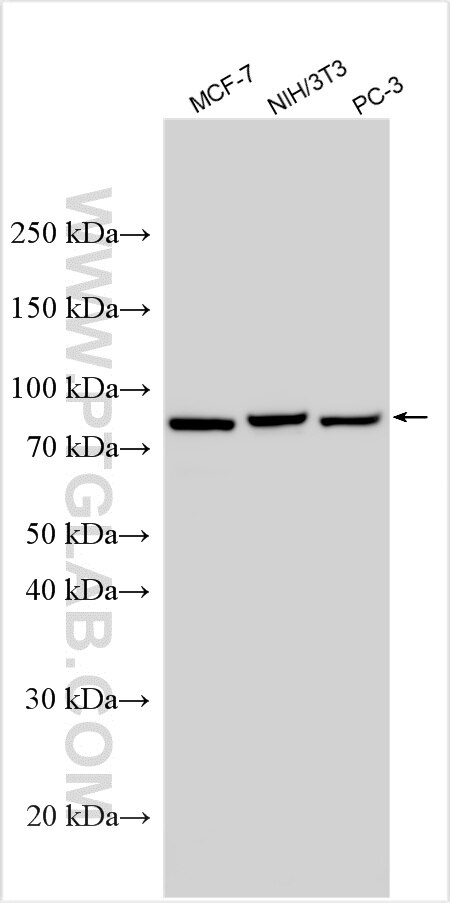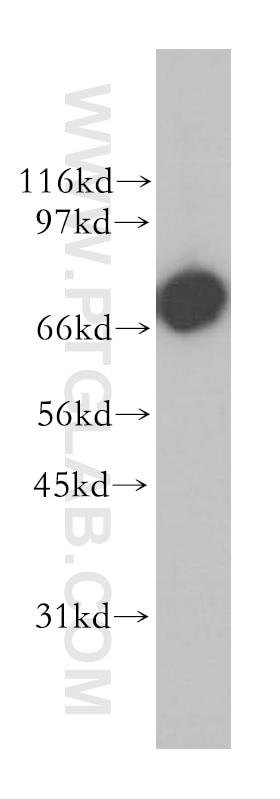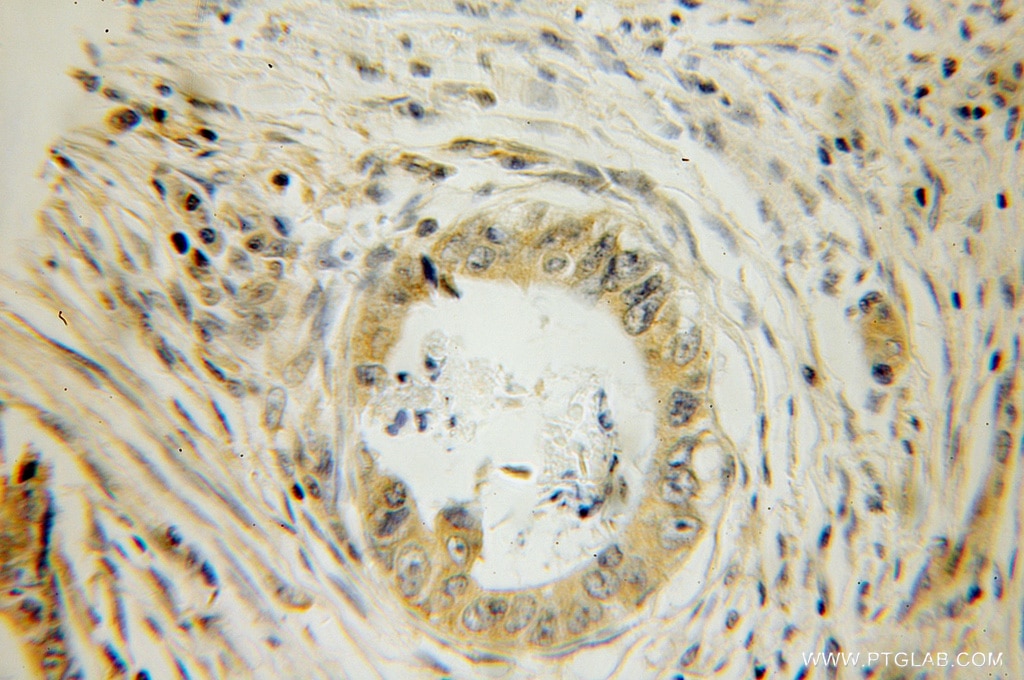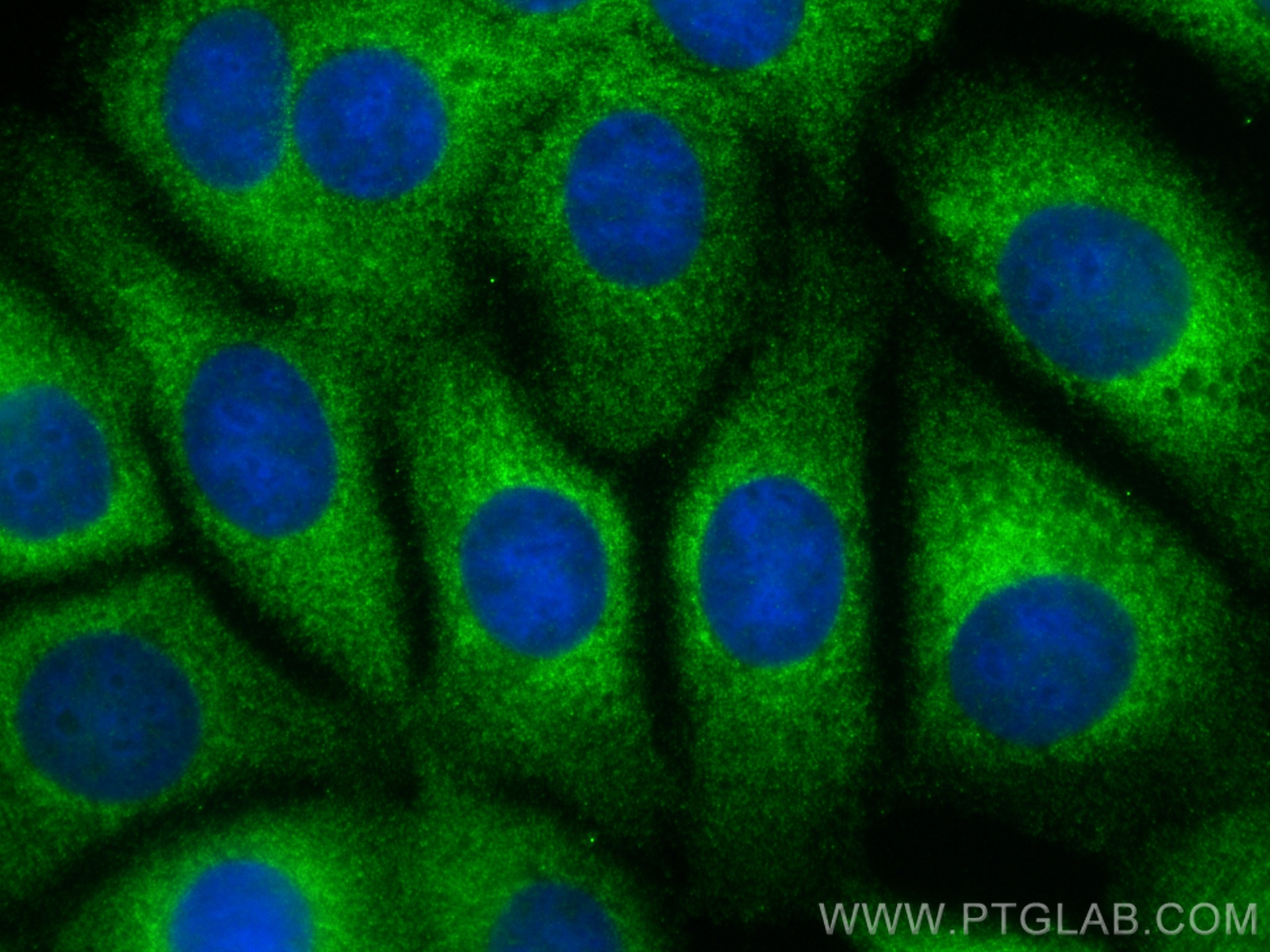Tested Applications
| Positive WB detected in | MCF-7 cells, NIH/3T3 cells, PC-3 cells |
| Positive IHC detected in | human colon cancer tissue Note: suggested antigen retrieval with TE buffer pH 9.0; (*) Alternatively, antigen retrieval may be performed with citrate buffer pH 6.0 |
| Positive IF/ICC detected in | MCF-7 cells |
Recommended dilution
| Application | Dilution |
|---|---|
| Western Blot (WB) | WB : 1:1000-1:4000 |
| Immunohistochemistry (IHC) | IHC : 1:20-1:200 |
| Immunofluorescence (IF)/ICC | IF/ICC : 1:200-1:800 |
| It is recommended that this reagent should be titrated in each testing system to obtain optimal results. | |
| Sample-dependent, Check data in validation data gallery. | |
Published Applications
| WB | See 2 publications below |
| IF | See 1 publications below |
Product Information
12989-1-AP targets GSPT2 in WB, IHC, IF/ICC, ELISA applications and shows reactivity with human, mouse, rat samples.
| Tested Reactivity | human, mouse, rat |
| Cited Reactivity | human, mouse |
| Host / Isotype | Rabbit / IgG |
| Class | Polyclonal |
| Type | Antibody |
| Immunogen | GSPT2 fusion protein Ag3641 Predict reactive species |
| Full Name | G1 to S phase transition 2 |
| Calculated Molecular Weight | 628 aa, 69 kDa |
| Observed Molecular Weight | 69-75 kDa |
| GenBank Accession Number | BC036077 |
| Gene Symbol | GSPT2 |
| Gene ID (NCBI) | 23708 |
| RRID | AB_2115511 |
| Conjugate | Unconjugated |
| Form | Liquid |
| Purification Method | Antigen affinity purification |
| UNIPROT ID | Q8IYD1 |
| Storage Buffer | PBS with 0.02% sodium azide and 50% glycerol pH 7.3. |
| Storage Conditions | Store at -20°C. Stable for one year after shipment. Aliquoting is unnecessary for -20oC storage. 20ul sizes contain 0.1% BSA. |
Background Information
GSPT2, also named as Eukaryotic peptide chain release factor GTP-binding subunit ERF3B or G1 to S phase transition protein 2 homolog, is a 628 amino acid protein, which belongs to the GTP-binding elongation factor family. ERF3 subfamily. GSPT2 localizes in the cytoplasm and is highly expressed in IUCC stage II colorectal cancer (CRC). GSPT2 is involved in translation termination in response to the termination codons UAA, UAG and UGA and may play a role as a potent stimulator of the release factor activity of ETF1. It may play a role in cell cycle progression.
Protocols
| Product Specific Protocols | |
|---|---|
| WB protocol for GSPT2 antibody 12989-1-AP | Download protocol |
| IHC protocol for GSPT2 antibody 12989-1-AP | Download protocol |
| IF protocol for GSPT2 antibody 12989-1-AP | Download protocol |
| Standard Protocols | |
|---|---|
| Click here to view our Standard Protocols |
Publications
| Species | Application | Title |
|---|---|---|
Mol Cell Mammalian hyperplastic discs homolog EDD regulates miRNA-mediated gene silencing. | ||
Nat Commun Noninvasive urinary protein signatures associated with colorectal cancer diagnosis and metastasis. | ||
RNA Phosphorylation at intrinsically disordered regions of PAM2 motif-containing proteins modulates their interactions with PABPC1 and influences mRNA fate. | ||
Int J Mol Med eRF3b-37 inhibits the TGF-β1-induced activation of hepatic stellate cells by regulating cell proliferation, G0/G1 arrest, apoptosis and migration. | ||
Cells Relocalization of Translation Termination and Ribosome Recycling Factors to Stress Granules Coincides with Elevated Stop-Codon Readthrough and Reinitiation Rates upon Oxidative Stress |









